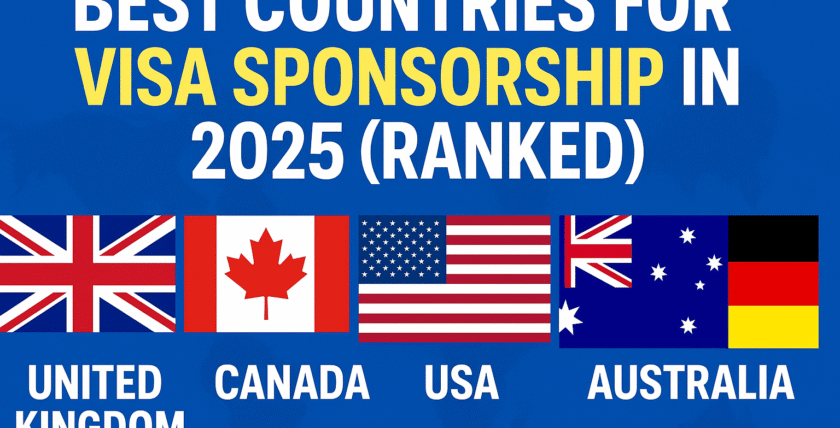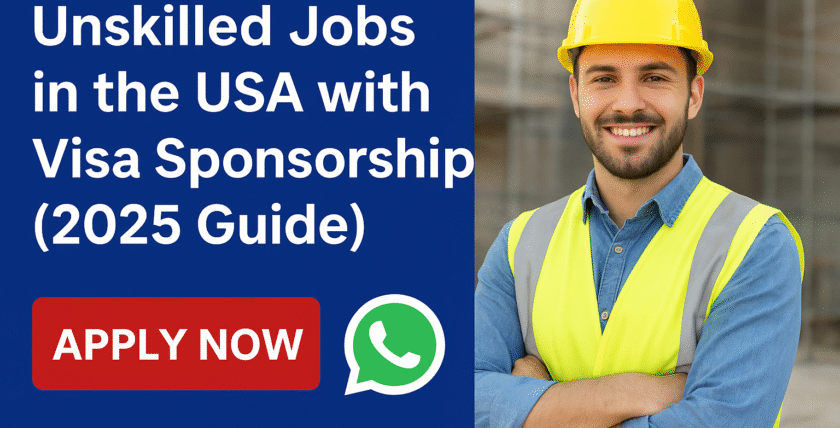Top USA Visa Sponsorship Programs in 2025 You Should Know – Looking for visa sponsorship opportunities in the U.S. this year? Here’s your go-to guide to the H-1B, EB-3, and H-2B visa programs, perfect for both skilled and unskilled workers. You’ll learn which fits your background, how to apply, and what to do if your application doesn’t work out.
1. H-1B Visa – Skilled Workers (Speciality Occupations)
What it is:
The H-1B is a non-immigrant visa for professionals in speciality occupations—such as IT, engineering, healthcare, etc.—that demand at least a bachelor’s degree or its equivalent.
-
Employers file Form I-129 on your behalf.
-
Subject to an annual cap: 65,000 regular visas + 20,000 for master’s degree holders. Some universities or non-profits are exempt.
-
The H-1B includes dual intent—you can pursue permanent residency.
Good for skilled workers.
2. EB-3 Visa – Permanent Residency for Skilled, Semi-Skilled & Unskilled Workers
What it is:
The EB-3 is a permanent residency (Green Card) category that covers three groups: skilled workers, professionals, and “other workers” (unskilled roles). Employers must complete a PERM labour certification, demonstrating that there are no qualified U.S. workers.
Best for those looking to settle permanently, including unskilled workers.
3. H-2B Visa – Temporary Non-Agricultural Workers
What it is:
The H-2B visa allows employers to hire workers for temporary, non-agricultural jobs—like hospitality, construction, landscaping, seafood processing—especially during high-demand seasons.
-
Employers must file a labour certification proving no U.S. workers are available, then submit an I-129 on your behalf.
-
Annual cap: 66,000 visas, split evenly between the first and second halves of the fiscal year.
-
In FY 2025, supplemental visas were granted: about 64,716 extra, with allocations including 20,000 reserved for nationals from certain countries.
Ideal for unskilled or seasonal workers looking for short-term opportunities.
Who Should Apply: Unskilled vs Skilled Workers?
| Visa Program | Best For | Why |
|---|---|---|
| H-1B | Skilled workers with degrees | For professional roles, high demand and dual intent |
| EB-3 | Skilled, semi-skilled, unskilled | Offers a green card path; good for long-term planning |
| H-2B | Unskilled/seasonal workers | Short-term work for those without degree requirements |
How to Apply – Step by Step
-
Find Employers Who Sponsor
Look for job listings explicitly stating “H-1B/Labour Petition”, “EB-3 Green Card sponsorship”, or “H-2B seasonal work with sponsorship”. -
Employer Takes Action
-
H-1B: Employer registers you electronically and enters the lottery (March); if selected, files I-129. Expect a start date after Oct 1.
Immigration Insights & Issues Blog -
EB-3: Employer files PERM, then I-140 petition. Wait for the visa number via the Visa Bulletin to proceed.
Travel.state.govEb3.work -
H-2B: Employer applies for certification during a narrow window (e.g., July 3–5, 2025, for an Oct 1 start date). File I-129.
DOL
-
-
Submit Application
Once approved at USCIS, apply at a U.S. consulate or adjust status if already legal in the U.S.
What to Do If You’re Rejected
-
H-1B: Retain your petition; ask the employer to re-enter the lottery next year or explore CPT/OPT pathways.
Keep job and education aligned with “speciality occupation” to boost chances. -
EB-3: Consider shifting to other skilled immigration streams like EB-2 with upgraded qualifications.
-
H-2B: Ask employer to reapply if caps reset; look for LMIA-exempt short-term programs or travel for seasonal work in different visa categories.


